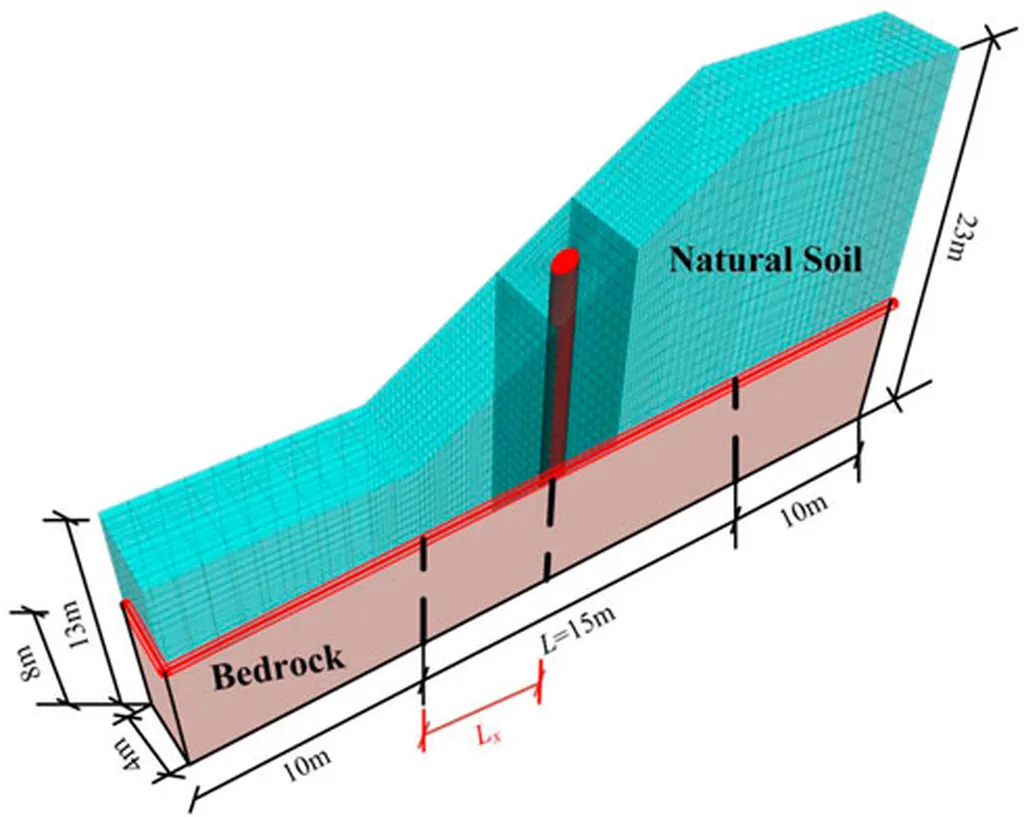In the quest to fortify slopes and protect vital infrastructure, engineers have long turned to piles as a reliable stabilization method. Yet, the intricate dance between soil and pile has remained a complex puzzle, with traditional analysis methods often falling short. Now, a groundbreaking study led by Nagessa Zerihun Jilo from the Department of Civil Engineering is shedding new light on this challenge, offering insights that could reshape the way we approach slope stabilization, particularly in the energy sector.
Jilo’s research, published in the journal *Advances in Civil Engineering* (translated from the original title), delves into the nuances of pile-stabilized slopes under lateral loads. Using advanced finite element modeling in PLAXIS 2D, Jilo and his team explored how varying pile parameters—such as position, diameter, and length—affect slope stability. Their findings could have significant commercial implications, particularly for energy projects where slope instability can pose substantial risks and costs.
The study revealed that the position of the pile is crucial, with the optimal placement at 0.4 times the slope height increasing the safety factor by a notable 21.14%. “This finding underscores the importance of precise positioning in pile installation,” Jilo explains. “A small adjustment can lead to a significant improvement in stability, which is critical for the safety and longevity of infrastructure.”
The research also highlighted that while increasing the pile diameter initially enhances stability, the benefits taper off as the diameter grows beyond 1 meter. Similarly, extending the pile length to 14 meters boosted the safety factor by over 21%, but further increases yielded diminishing returns. “It’s about finding the sweet spot,” Jilo notes. “Too much or too little can lead to inefficiencies, either in cost or performance.”
For the energy sector, these insights are particularly valuable. Energy projects, such as pipelines, transmission lines, and renewable energy installations, often traverse challenging terrains where slope instability is a real and present danger. The ability to optimize pile parameters not only enhances safety but also offers economic benefits by reducing material and construction costs.
Jilo’s work suggests that future developments in slope stabilization will increasingly rely on sophisticated modeling and analysis. “The traditional methods have their limits,” he says. “By embracing advanced techniques like finite element analysis, we can achieve more accurate and reliable designs, ultimately leading to safer and more cost-effective solutions.”
As the energy sector continues to expand into remote and rugged areas, the need for robust slope stabilization methods will only grow. Jilo’s research provides a roadmap for engineers and project managers, offering a clearer path to optimizing pile configurations for maximum stability and efficiency. In doing so, it paves the way for safer, more reliable infrastructure that can withstand the test of time and nature.
For those in the field, the message is clear: the future of slope stabilization lies in precision, optimization, and the smart use of technology. As Jilo’s research demonstrates, the key to success is understanding the intricate interplay between soil and pile—and leveraging that knowledge to build stronger, safer foundations for the energy projects of tomorrow.

